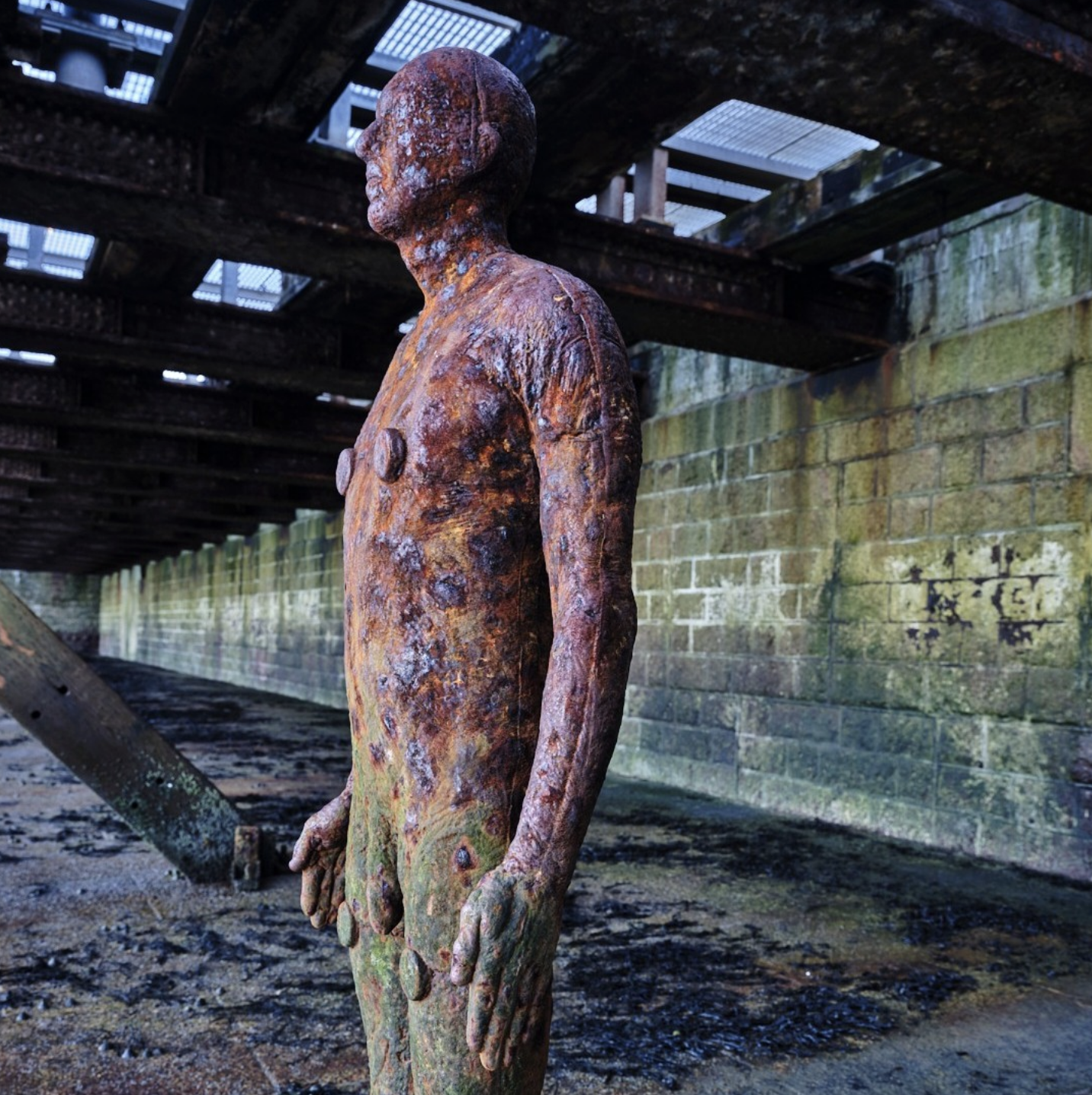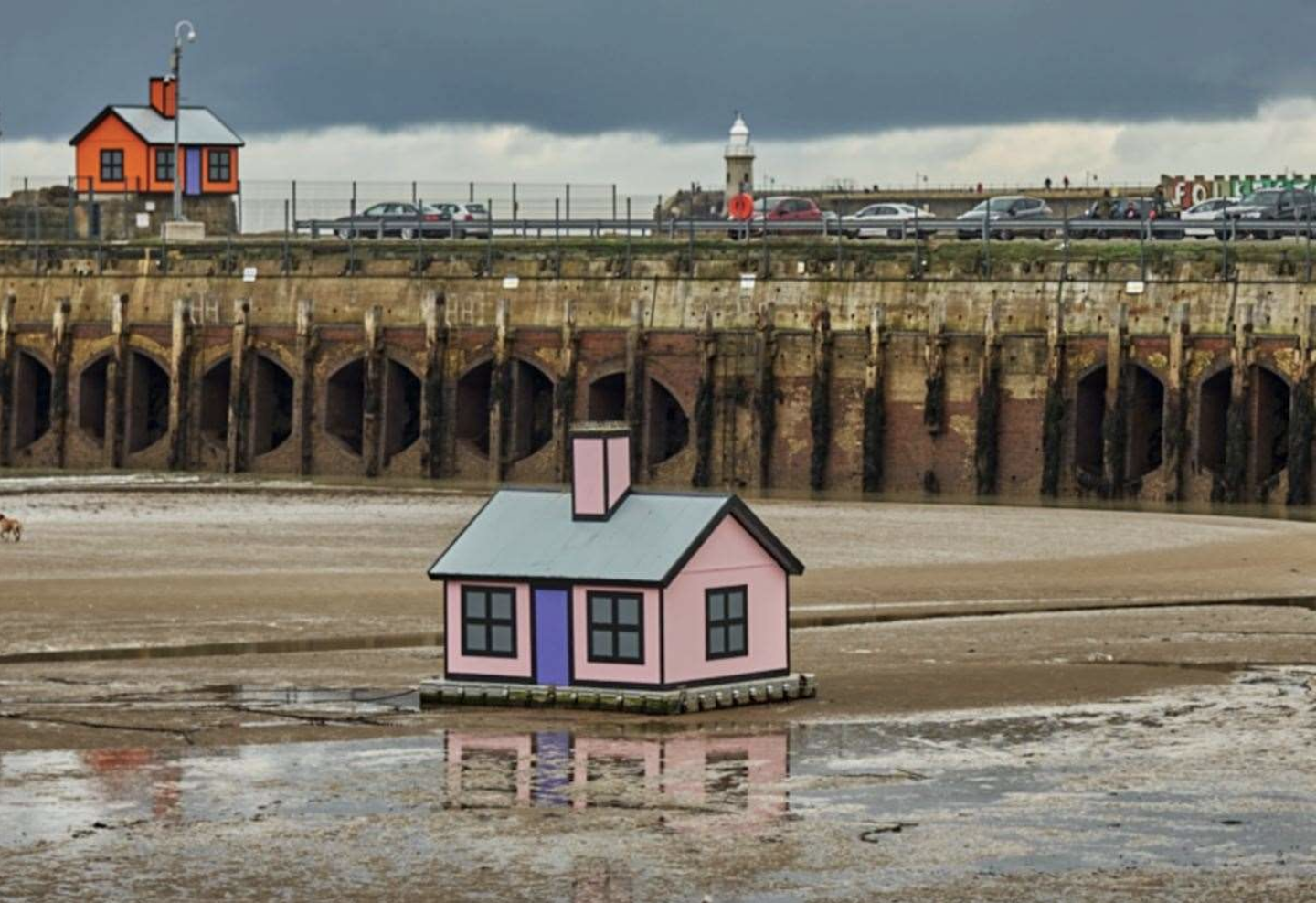Folkestone Triennial: Art and Inspiration Are Everywhere, All Around Us
Photo: Mike Eggers ©
I recently travelled with The Americans down on the train to Folkestone. The seaside town has been hosting its Triennial, a large-scale outdoor celebration of contemporary art. This year the festival showcases work by 18 artists from 15 different countries. (Until 19 October)
Greeted at the station by a mural declaring ‘Folkestone is an art school,’ we took the walking tour through sleepy side streets, past brightly coloured shops and houses, past the tallest brick railway viaduct in Europe. Map in hand, we paused to locate a series of gilded models of fishing boats on poles, five water towers, and a shell sculpture; a three-headed bird, a large cheerful lightbulb painted on the curved side of a building, a miniature holiday home located awkwardly on the beach. We found the ‘Whithervane,’ a machine artpiece that monitors alarmist internet newsfeeds, pointing to their geographical source. The works were varied, charming, curious, eccentric. Some of them riffed on the town’s leisure, fishing and military past. Some took up current issues such as water pollution and the plight of refugees.
Tracey Emin has placed small bronze casts of a baby’s toy and clothes at various locations around the town - by a station bench, on a kerb, beside a flower bed - poignant reminders of the challenges facing hard-up young mothers. Searching for one of the pieces by a school railing, we came across a real baby’s solitary woollen mitten.
From the lofty churchyard, we looked out across the silvery sea below, as a vintage steam packet sailed by. We wandered past palm trees, the Churchill Club offering pool, darts and social, the Party Bar open ’til 3 AM, the Pretty Good Café. We stepped out of the rain for a drink in a carpeted pub, and dined on battered cod cheeks and chips in a friendly restaurant on the Harbour Arm. We stopped at Folkestone Harbour Railway Station, where, in the First World War, countless troops disembarked for the journey to Flanders. It was dubbed ‘the gateway to the trenches.’ Nearby, on the shoreline, stood one of Antony Gormley’s life-size cast-iron human figures.
‘Each work is necessarily isolated, and is an attempt to bear witness to what it is like to be alive, alone in space and time.’
Antony Gormley
As we searched the townscape for art exhibits, I found myself mistakenly staring at a satellite dish, a stainless-steel beer barrel and an overflowing skip; a security camera and two men power-washing a distant roof. There was a red dress hanging from a tree. Art and inspiration seemed everywhere, all around us. And perhaps that was the point.
Above the old post office on Tontine Street, we spotted a large neon sign proclaiming: ‘Heaven is a place where nothing ever happens.’ A nod perhaps to Folkestone’s popularity with retirees. I recalled the late ‘70s Talking Heads song ‘Heaven,’ which the artwork is quoting. When I was young, I couldn’t think of anything worse than a place where nothing happens. Now that I’m older and the world seems so turbulent, inertia does sound rather heavenly.
'Everyone is trying to get to the bar.
The name of the bar, the bar is called Heaven.
The band in Heaven, they play my favorite song.
Play it one more time, play it all night long.
Heaven,
Heaven is the place.
A place where nothing,
Nothing ever happens.
There is a party, everyone is there.
Everyone will leave at exactly the same time.
When this party's over, it will start again.
Will not be any different, will be exactly the same.
Heaven,
Heaven is a place,
A place where nothing,
Nothing ever happens.’
Talking Heads, ‘Heaven’ (D Byrne / J Harrison)
No. 539



